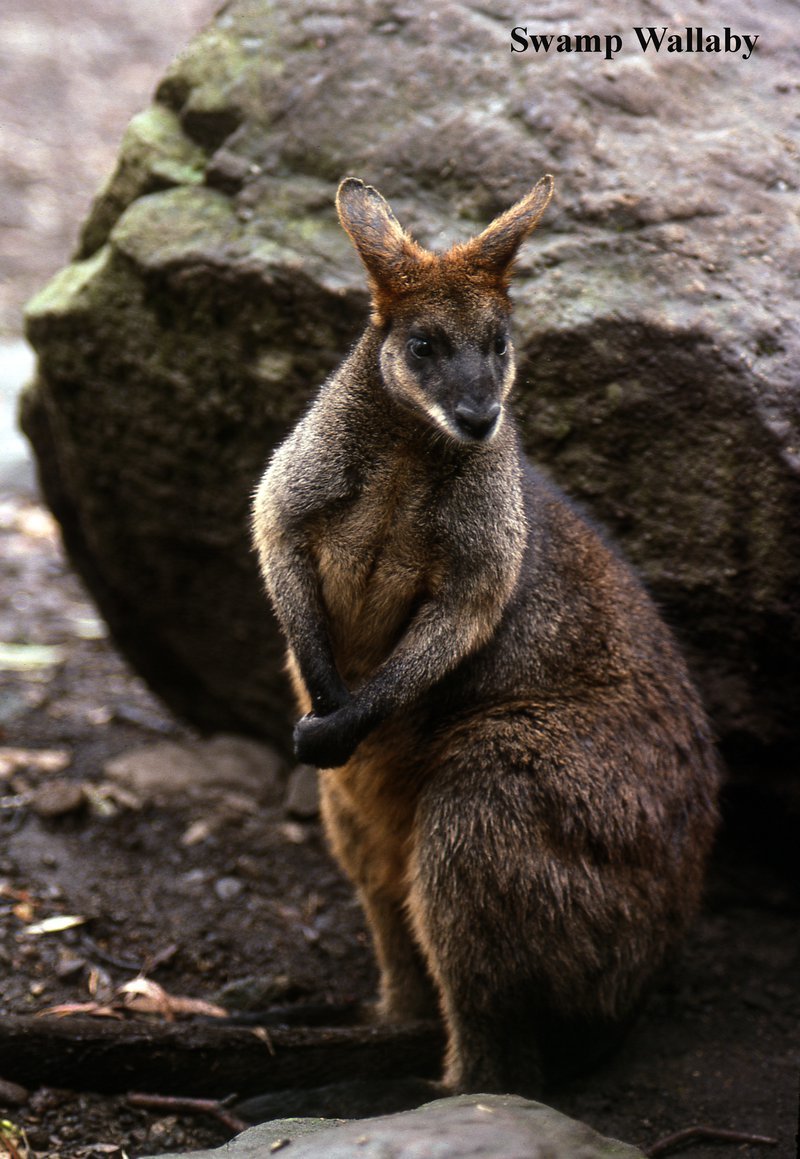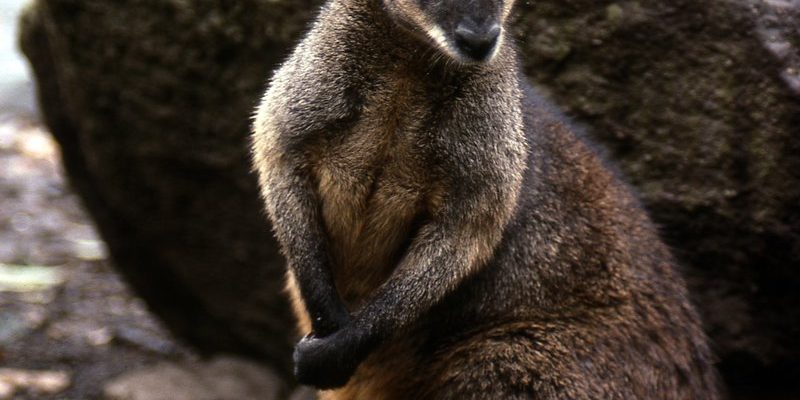
So, pull up a chair, grab your favorite drink, and let’s dive into the muddy waters of swamp wallaby myths. We’ll clear up misunderstandings and shine a light on the real lives of these unique marsupials. By the end, you’ll have a clearer picture of what makes these creatures special—and maybe even want to spot one in the wild!
Myth 1: Swamp Wallabies Are Just Miniature Kangaroos
You might think that swamp wallabies are simply baby kangaroos because of their similar looks. After all, they both belong to the macropod family—meaning “big foot.” However, there’s way more to the story. While they share a common ancestry, swamp wallabies, known scientifically as *Wallabia bicolor*, have their own unique traits that set them apart.
For starters, swamp wallabies are generally smaller than many of their kangaroo cousins. Adults typically weigh between 5 and 15 kilograms (11 to 33 pounds) and stand about 70 to 100 centimeters (27 to 39 inches) tall. Their dark fur and distinctive coloring help them blend perfectly into their wetland habitat. So, while they may look similar, think of them more like your playful cousin instead of a mini version of yourself.
Moreover, swamp wallabies have slightly different behaviors. For example, they are more solitary than kangaroos, preferring to graze alone instead of in larger groups. This unique social structure makes them fascinating in their own right!
Myth 2: Swamp Wallabies Are Dangerous
You might have heard someone say that swamp wallabies are aggressive or dangerous. Here’s the thing: they’re not looking to pick a fight! Like most wildlife, they prefer to keep to themselves unless threatened. If you encounter one in the wild, it’s more likely to hop away than to charge at you.
Swamp wallabies do have powerful legs, which they use for jumping and escaping predators. But aggression is not in their nature. They would much rather munch on grasses, leaves, and shoots. In fact, they’re known to be quite shy. If approached, they might freeze and then make a hasty exit, but they rarely pose a threat to humans.
If you’re in their territory and you witness their behavior, take it as a compliment. They probably just see you as a potential threat and are doing their best to stay safe!
Myth 3: Swamp Wallabies Are Only Found in Swamps
As their name suggests, swamp wallabies are indeed associated with wetland habitats, but they’re not limited to swamps alone. Many people assume they only live among marshes, but these clever little creatures are adaptable and can thrive in a variety of environments, including woodlands, grasslands, and even scrublands.
To get a real sense of their adaptability, think of it like this: it’s like finding a friend who can enjoy a picnic on a sunny beach or a cozy night in a cabin—both places are great, but they excel in different ways. Swamp wallabies can find food and shelter in diverse settings, making them more resilient than you might expect.
In areas where wetlands are scarce, you might spot them in forested areas or along the edges of woodlands. They’re agile and smart, always finding ways to adapt to their surroundings.
Myth 4: Swamp Wallabies Are Endangered
Another common misconception is that swamp wallabies are on the brink of extinction. While it’s true that some populations are threatened due to habitat loss and hunting, as a species, they’re not classified as endangered. They are listed as “Least Concern” by the IUCN, meaning they’re currently stable overall.
That said, specific populations can face challenges. For instance, areas affected by urban development or agriculture can see a decline in swamp wallaby numbers. Conservation efforts are important for maintaining their habitats and ensuring their populations remain healthy.
It’s essential to appreciate these creatures and understand their varied populations. By raising awareness and supporting conservation, we can help ensure that swamp wallabies continue to hop around our wetlands for generations to come.
Myth 5: Swamp Wallabies Are Loners
You might picture swamp wallabies as solitary creatures, but that’s not the whole story. While they do enjoy their alone time—especially when they’re munching on their favorite snacks—they can also be social animals. During mating season, males can be quite competitive, showcasing their strength and agility to win over females.
Moreover, mother swamp wallabies are nurturing and protective of their young. They carry their joeys in their pouches for several months, teaching them the ropes of survival in the wild. Once the joeys start venturing out, they still spend a lot of time with their mothers, learning how to find food and stay safe.
So, while they might not form large groups like kangaroos, swamp wallabies do enjoy some social interactions, especially during key life stages. Think of them as individuals who appreciate their space but value family bonds.
Myth 6: Swamp Wallabies Are Strict Herbivores
Many people believe that swamp wallabies stick to a strictly herbivorous diet. While they primarily eat grasses, leaves, and shrubs, they’re a bit more flexible than you might think. These adaptable eaters can nibble on various plants, including fruits and flowers, depending on what’s available in their habitat.
Imagine it’s like going to a buffet—while they have their favorites (the leafy greens!), they’ll try other dishes if they catch their interest. This dietary flexibility helps them survive in fluctuating environments where food sources might change.
In fact, their ability to adapt their diet allows them to thrive even when some food sources dwindle. This versatility is a testament to their resilience and survival skills in the wild.
Myth 7: Swamp Wallabies Are Not Interesting Animals
Okay, let’s get one thing straight: swamp wallabies are way more interesting than many people assume. They have unique behaviors, fascinating adaptations, and rich social interactions that make them special members of Australia’s wildlife. Instead of being just another animal that hops around, swamp wallabies have intriguing stories to tell.
From their incredible ability to navigate various habitats to their nurturing parenting styles, there’s much more beneath the surface. Plus, observing these little creatures in their natural environment can be a delightful experience, like catching a sneak peek into a world that most people overlook.
So, the next time you hear someone say swamp wallabies are dull, you can confidently share all the juicy details you’ve learned here!
Understanding the swamp wallaby is all about looking beyond the myths and misconceptions. Just like any animal, they have their quirks and traits that make them unique and fascinating. By recognizing the truth about these creatures, we can appreciate them more and support their conservation.
So, whether you’re out in the Australian bush, watching wildlife documentaries, or just chatting with friends, keep these facts in mind. The swamp wallaby isn’t just a cute face—it’s a resilient and adaptable animal with a rich life story. Next time you think of these adorable marsupials, remember that there’s so much more beneath the surface waiting to be discovered!

